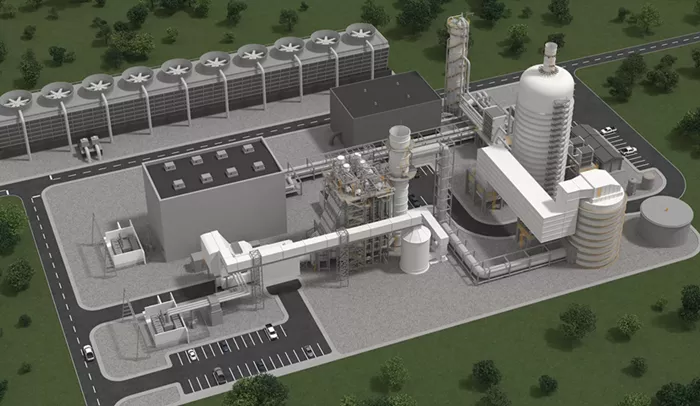A recent study by GE Vernova has found that integrating its Exhaust Gas Recirculation (EGR) system could lower the total cost of carbon capture at gas-fired power plants by 6%. This research, part of a front-end engineering design (FEED) study, focused on the synergy between natural gas combined-cycle (NGCC) plants and carbon capture systems.
The findings, released by the Department of Energy’s (DOE) Office of Fossil Energy and Carbon Management, examined the retrofitting of Alabama Power’s James M. Barry Electric Generating Plant in Bucks, Alabama. This facility, which operates on coal and natural gas, has a total generating capacity of 3,246,000 kW and is capable of capturing up to 95% of its CO2 emissions.
The study highlighted several advantages of the EGR system compared to traditional setups, including:
- A significant reduction in the footprint and cost of carbon capture facilities.
- Decreased operating costs due to reduced amine degradation.
- Lower energy requirements for CO2 separation due to increased concentrations of CO2 in flue gas.
- Enhanced steam turbine output from reduced steam consumption.
Among the technologies examined were the use of NGCC steam in the carbon capture process, potential upgrades to gas turbines, and control systems for both NGCC and carbon capture operations. The EGR system reintroduces a portion of the exhaust gas back into the gas turbine inlet, which helped the study cut the size and expenses associated with the carbon capture system by halving the number of absorber towers. This approach improved the overall efficiency and flexibility of the plant while potentially increasing its power output.
“GE Vernova is thankful for the Department of Energy’s support for this pioneering study, which is the first to explore EGR technology in a gas power carbon capture plant,” said Jeremee Wetherby, leader of GE Vernova Carbon Solutions. “Carbon capture is essential for reducing emissions in power generation to near-zero levels, and we are encouraged by the study’s findings, which may vary across sites but serve as a valuable indicator of potential improvements.”
The study was conducted in collaboration with Southern Company, Linde, BASF, and Kiewit. Dr. Mark Berry, senior vice president of Research, Environment, and Sustainability at Southern Company, expressed optimism about the findings. “This study demonstrates that implementing carbon capture in natural gas combined-cycle generation may offer long-term value for customers in a net-zero future.”
Dominic Cianchetti, senior vice president at Linde, emphasized the importance of collaboration among technology providers and stakeholders in advancing gas power decarbonization technology. “We commend the DOE’s leadership in this initiative and remain committed to helping decarbonize industry,” he stated.
Kevin Needham, president of Power Engineering at Kiewit Engineering Group Inc., added, “This study underscores the potential for retrofitting existing power plants to comply with stringent carbon emission standards, a crucial step toward sustainable energy.”
With two decades of experience in developing EGR systems, GE Vernova aims to enhance nitrogen oxide (NOx) control and part-load efficiency, marking a significant advancement in the ongoing effort to achieve cleaner energy solutions.
Related topics:
- Rehlko: A Bold Rebranding for Kohler Energy
- John Deere Unveils Advanced Mowers and Decks at 2024 Equip Expo
- Eaton Introduces Comprehensive Clutch and Flywheel Kits for AMTs

